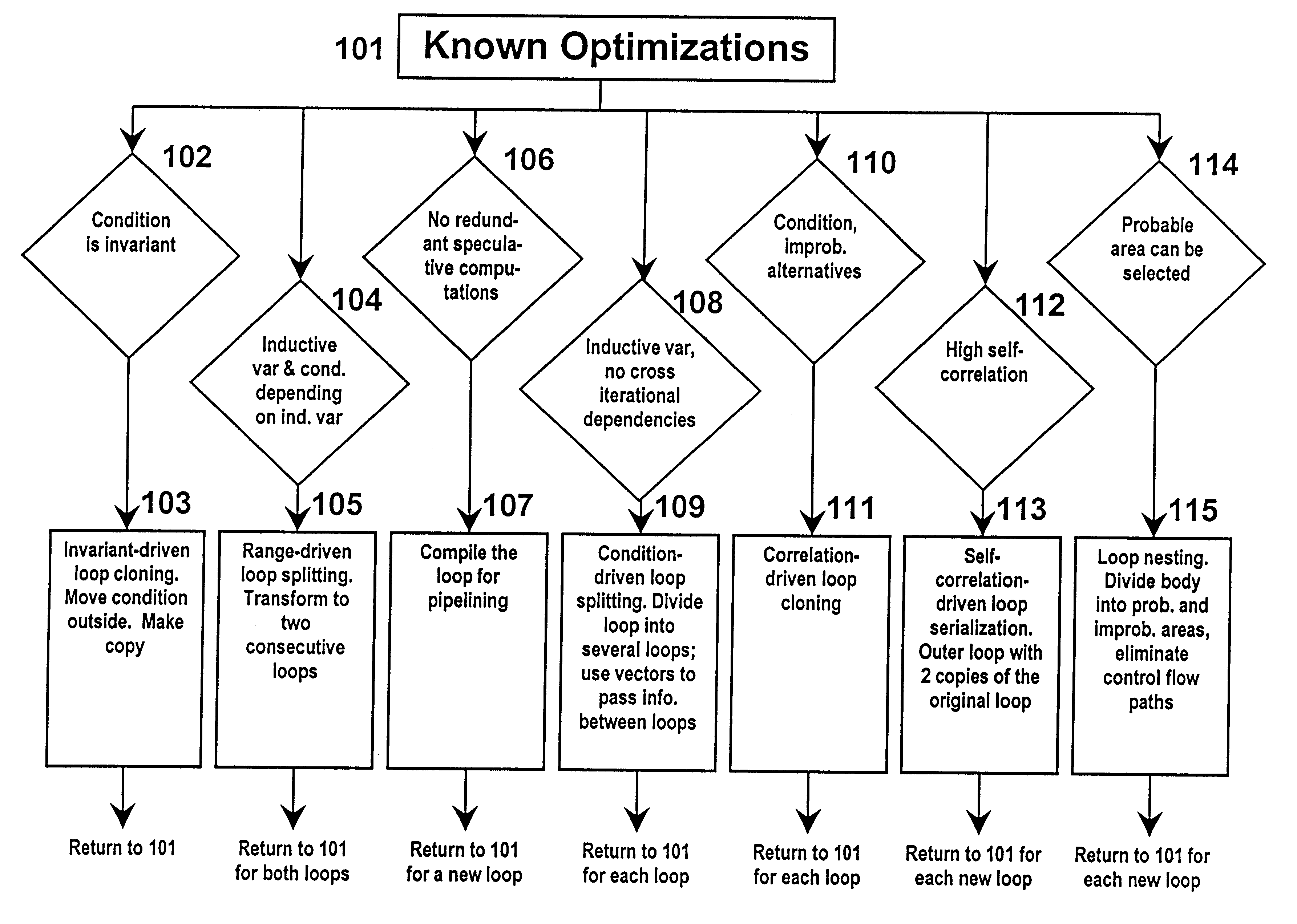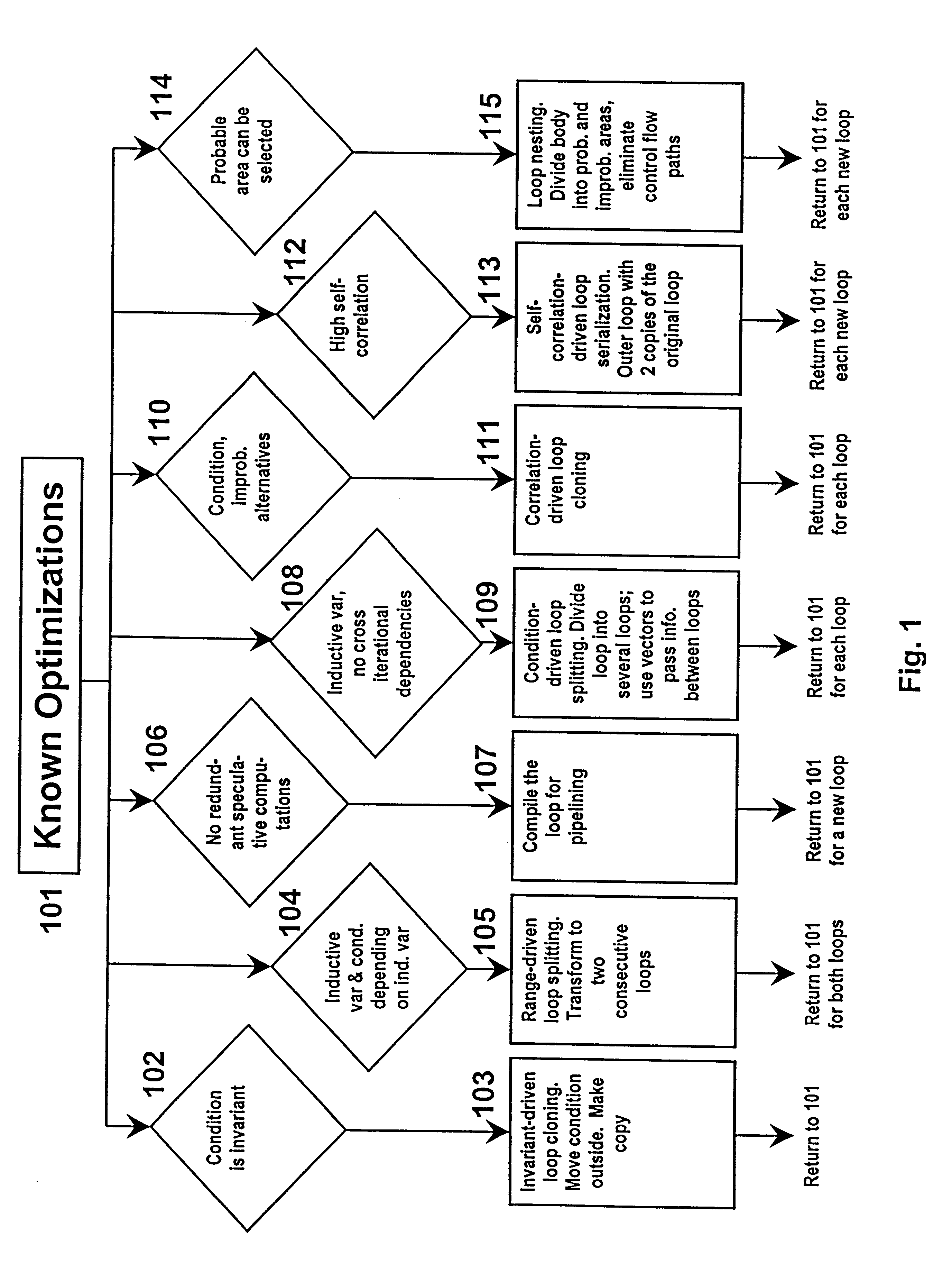Compiler method and apparatus for elimination of redundant speculative computations from innermost loops
a compiler and loop technology, applied in the field of compiler techniques for optimizing loop constructs, can solve problems such as reducing the effectiveness of loop software pipelining, and achieve the effect of reducing redundant speculative calculations and high probability
- Summary
- Abstract
- Description
- Claims
- Application Information
AI Technical Summary
Benefits of technology
Problems solved by technology
Method used
Image
Examples
example 1
Before transformation:
In this example, the entire set of values of the inductive variable "i" can be divided into two subsets: [0, K) and [K, N). (In the C language notation (i>=0 && i=K && i
After transformation:
After known transformations (such as unreachable code removing) the following resulting loops are obtained:
If the examined loop has no redundant speculative computations (see 106, FIG. 1), the loop is compiled for software pipelining, see 107, FIG. 1. Then, the next innermost loop is considered starting with step 101, FIG. 1.
If the examined loop has an inductive variable and does not have cross-iterational data dependencies (except for incrementing for decrementing the inductive variable), the compiler divides the examined loop into two or three consecutive loops. The loop is divided at the conditional statement, which brings redundant speculative calculations into the loop body. See 108 and 109, FIG. 1. The transformation 109 is referred to herein as condition-driven l...
example 2
Before transformation
After transformation:
Another illustration of this condition-driven loop splitting transformation is provided in the following Example 3:
example 3
Before transformation:
When this loop is divided at the condition "q>0", there exist two data dependencies between the first resultant loop and the second resultant loop ("q" and "i") and there is one data dependence between the first resultant loop and the third resultant loop ("i").
After transformation:
It should be noted that the loop iteration counter ("i" in this example) is simply one of data dependencies between the resultant loops.
Another example (Example 4 below) of condition-driven loop splitting demonstrated a general case of the use of this technique.
PUM
 Login to View More
Login to View More Abstract
Description
Claims
Application Information
 Login to View More
Login to View More - R&D
- Intellectual Property
- Life Sciences
- Materials
- Tech Scout
- Unparalleled Data Quality
- Higher Quality Content
- 60% Fewer Hallucinations
Browse by: Latest US Patents, China's latest patents, Technical Efficacy Thesaurus, Application Domain, Technology Topic, Popular Technical Reports.
© 2025 PatSnap. All rights reserved.Legal|Privacy policy|Modern Slavery Act Transparency Statement|Sitemap|About US| Contact US: help@patsnap.com


